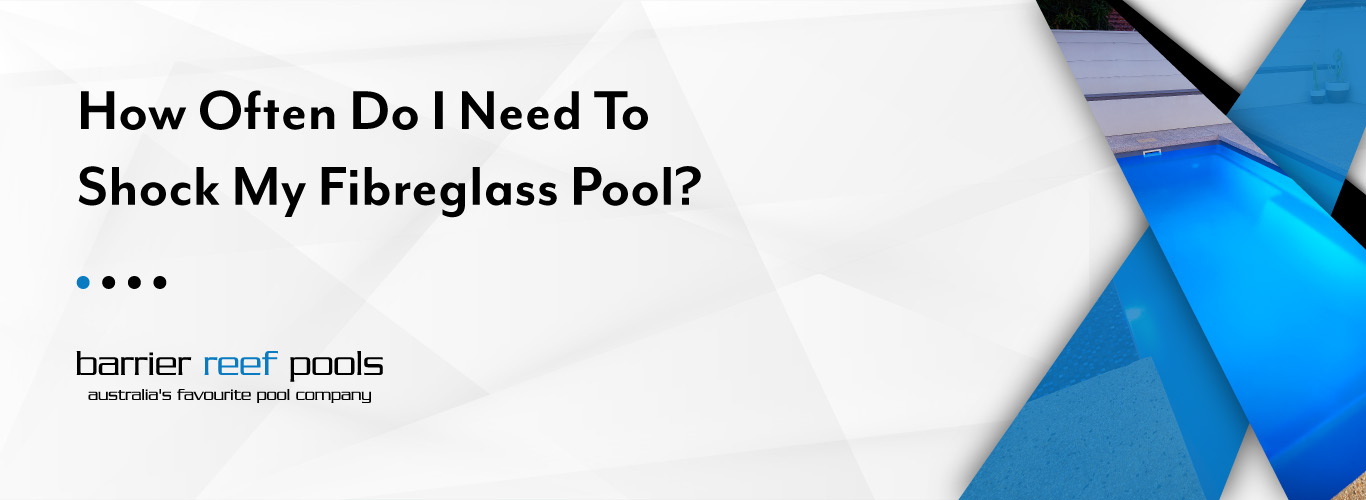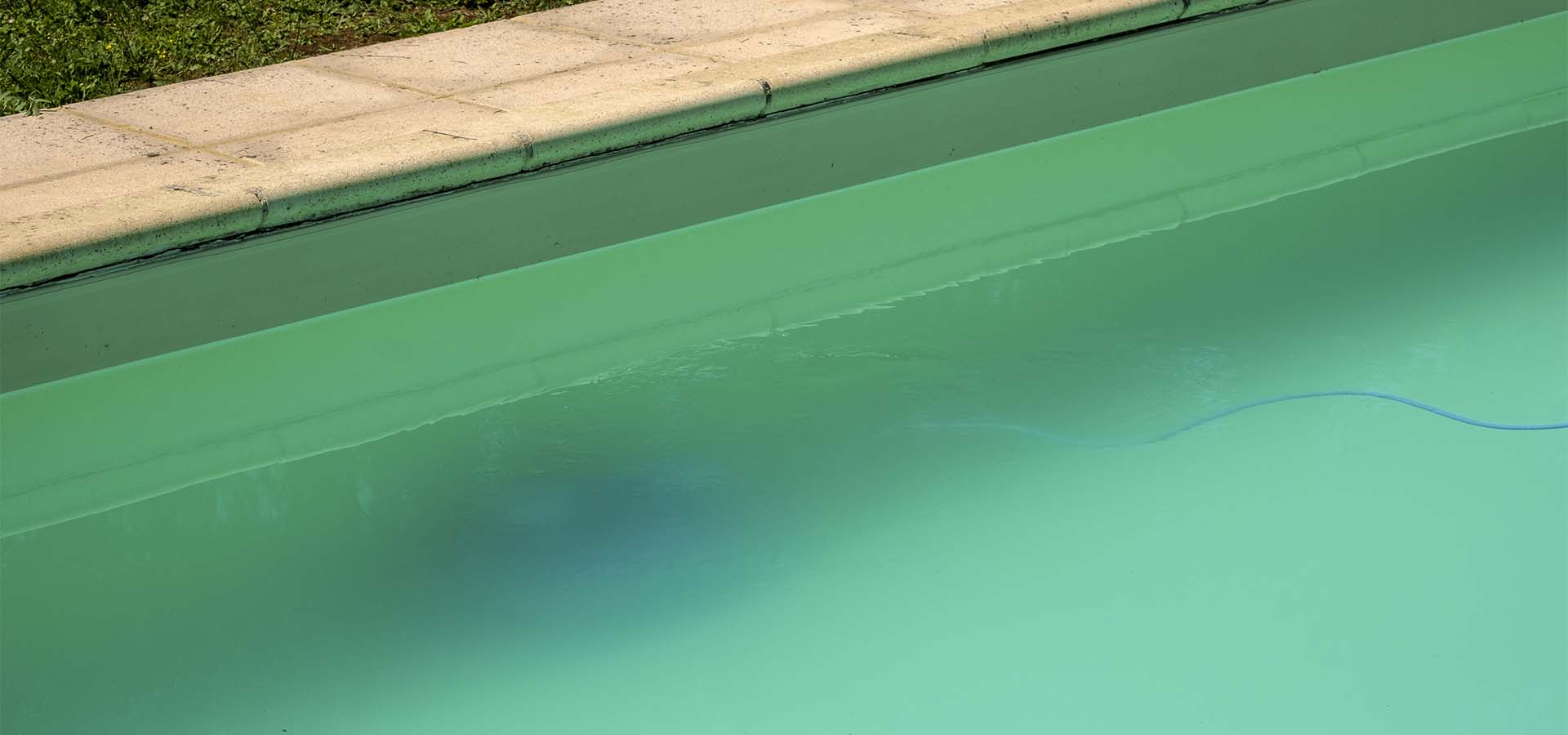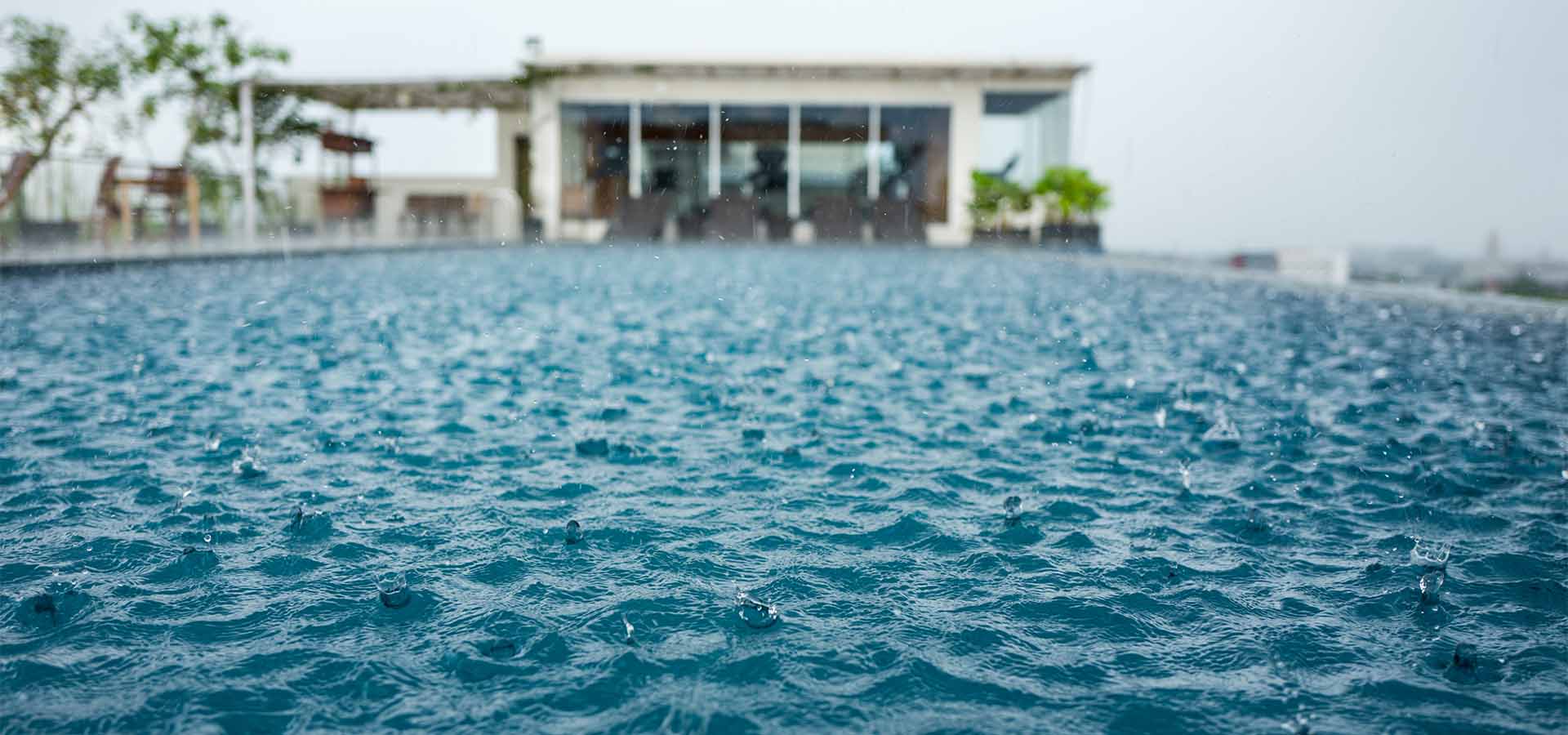Barrier Reef Pools > Blog > Pool Cleaning > How Often Do I Need To Shock My Fibreglass Pool?
Owning a swimming pool is a fabulous thing, cleaning it on the other hand, not so much. While fibreglass pools aren’t as prone to algae outbreaks as other pool types, they may still experience a slight imbalance from time to time. Here is everything you need to know about shocking your fibreglass pool.

It’s not uncommon for pool owners to be unaware of what pool shock is, especially if they have a regular pool maintenance worker taking care of it for them. Put simply, the term “shocking your pool” means adding a high dose of chlorine to the water to help clear up any impurities. This is usually done when the water is turning from its normal clear appearance to a cloudy or green colour. When this happens, the regular everyday dose of chlorine is not strong enough to fix the water quality. Pool shock comes in two forms, granular and liquid. Liquid shock is typically poured directly into the pool water whereas granular shock is normally dissolved in water before adding it to the pool.
Yes, you can! It’s quite simple. To do this, you simply add the recommended dose of shock to your pool water by walking around the pool edge, pouring as you go. Make sure you protect yourself by wearing adequate PPE and old clothes as chlorine is hazardous to the skin and eyes and is notorious for bleaching material.
Pool shock is easily accessible, and you can find it in most hardware stores, pool shops and online.
To keep your pool water crystal clear it’s best to shock your pool once a week rather than waiting for the water to turn. This will ensure your pool’s water chemistry balance is maintained at optimal levels.
Yes, it does. The sun’s UV rays break down chlorine and prevent it from working. Without a sufficient amount of stabiliser, UV rays can break down all the chlorine in a matter of two hours. To prevent the sun from affecting the level of chlorine you put into your pool, you should shock in the late afternoon when the sun is almost gone for the day. This will enable the shock to do its thing overnight. To ensure that you get the best results, you should run your pump overnight. This will allow the chlorine to distribute throughout the pool water.

If you are like most, your pool probably hasn’t had much use over winter. Shocking your pool once the weather warms up ensures it is clean and sanitary ready for when you want to use it again.
Summer tends to peak swimming time, and it’s likely your pool is getting a lot of use at this time of the year. This can cause a significant drop in the chlorine levels, so it should be done often during these periods to prevent an unsanitary pool.
As we mentioned above, UV rays break down chlorine which inhibits it from working properly. If you’ve had a lot of sun-filled days, it’s best to shock the pool. The same applies if the weather has been warm, elevated water temperatures make a perfect breeding ground for algae and bacteria, so shock if this is the case.
Heavy bouts of rain can dilute the chemical levels in your pool, and rainwater also brings with it contaminants such as pollution and contaminants that inevitably end up in your water. If you’ve had heavy rain of late, you should shock your pool.

You may be thinking if the pool has too much chlorine already, why would you add more? The strong chlorine smell and burning eyes are caused by a build-up of chloramines which is bad chlorine. Chloramines occur when the chlorine binds to contaminants and it is unable to sanitise the water effectively, by shocking the pool, you’re adding more free chlorine which is what eradicates algae and bacteria in your water.
Never shock your pool with people swimming in it. Shock is an extremely high dose of a potent strength chemical that can be dangerous for swimmers.
Algae growth in your pool comes in three different stages, it starts as a light green tinged algae, then it darkens into a deep green and finally into black algae which can be extremely troublesome to remove and hazardous.
If your pool is in the light green phase, you can rectify the issue by firstly cleaning out any dirt and debris with your pool scoop. Then add your shock and test your pools pH levels with a water testing kit. If your pH is too high, the shock alone won’t work as high pH inhibits the chlorines ability to kill contaminants. You’ll need to add hydrochloric acid to lower it. This chemical is extremely toxic so use it with caution. Follow the dose recommended for your pool type.
If the algae in your pool has darkened to deep green, follow the above steps but use a higher dose. If the algae has got to a dark green almost black stage, follow the steps mentioned above. Brush the pool minimum 3 to 4 times a week, add necessary algaecide, backwash the filter and continuously filter to clear it up. The good news is though modern fibreglass pools aren’t susceptible to black algae infestations as the algae struggles to attach and grow into the smooth surface, so if you’re lucky enough to own a quality fibreglass pool, this is something you shouldn’t have to worry about.
We hope this post has given you an idea about pool shock and what it’s used for. If you have any questions about shocking your pool, reach out to our friendly team here at Barrier Reef Pools, we are happy to help!